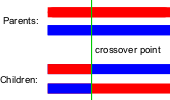Flu virus recombination or mutation?
 Recombination or mutation, that seems to be the big question regarding the avian flu (H5N1) virus in Viet Nam. In yesterday’s edition of the journal Nature, Klaus Stöhr reports that the WHO has not received enough samples of the virus to judge the genetic changes it has found in the few availabe samples.
Recombination or mutation, that seems to be the big question regarding the avian flu (H5N1) virus in Viet Nam. In yesterday’s edition of the journal Nature, Klaus Stöhr reports that the WHO has not received enough samples of the virus to judge the genetic changes it has found in the few availabe samples.
With so few samples to work on, it is impossible to judge how worried to be, says Klaus Stöhr, coordinator of the WHO’s flu programme. “It’s as if you hear a noise in your car engine, but you keep driving, not knowing whether it’s serious.”
Of the six human samples that the WHO has received from Vietnam, several contain a mutated version of H5N1. But that is not enough to indicate a broader change in the strain, says Perdue. It is also impossible for the agency to link this mutation of the virus to possible changes in how pathogenic and transmissible it is in humans.
The WHO isn’t being sent samples of deadly H5N1 virus., Nature, 11 May 2005
The WHO interprets the changes in the H5N1 virus as mutation, but Recombinomics argues that it may be a result of recombination, which is more troublesome because it means that the the H5N1 changes by acquiring genes from other viruses, which means it could easily acquire the properties of a human flu virus. That, in turn could allow it to start spreading like the human flu, but with the mortality rate of the avian flu. With the H5N1 mortality rate for humans well over 50 percent such a virus has the potential of killing millions of people all over the globe.
The WHO and the public health authorities in S-E Asia need to get their act together. This is an issue that goes far beyond worrying about the economic impact on a country or region. This is about making sure that in ten years there is an economy left in Viet Nam at all, and the rest of the world.